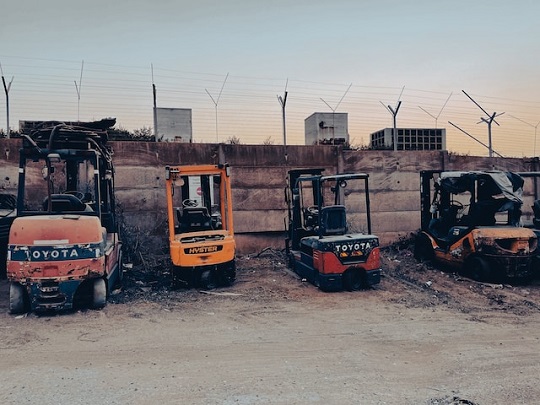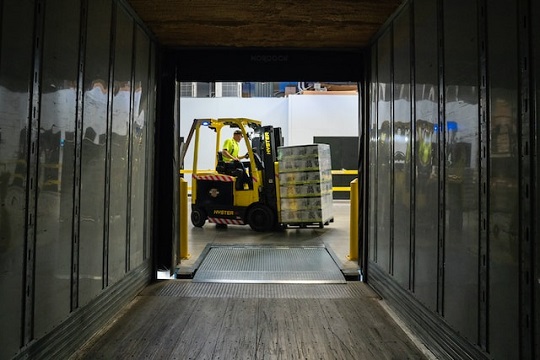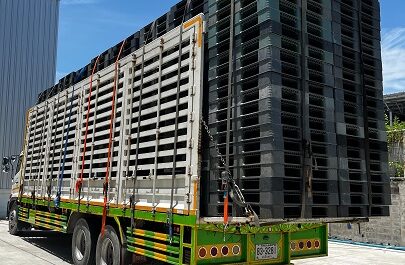Forklifts are essential tools in various industries, playing a crucial role in material handling and supply chain management. Understanding the lifespan of a forklift and its implications on maintenance costs is vital for businesses aiming to optimize their operations.
This blog post aims to explore the factors influencing a forklift’s lifespan and whether an older forklift becomes more expensive to maintain.
Additionally, we will discuss the strategic considerations behind replacing an aging forklift with a new one and how forklifts are interconnected with efficient supply chain management.
But before we delve deeper, make sure you have joined the scmguide telegram channel to receive notifications of the latest posts from this blog as well as more insights on supply chain management.
Table of Contents
Factors Affecting Forklift Lifespan
The lifespan of a forklift can vary depending on several factors. These factors include:
Usage
The intensity and frequency of use significantly impact a forklift’s lifespan. A forklift operating in a high-demand environment may experience more wear and tear than one used less frequently.
Maintenance
Regular maintenance, including inspections, servicing, and repairs, can significantly extend a forklift’s lifespan. Neglecting maintenance can lead to premature breakdowns and reduced longevity.
Operating Conditions
Forklifts used in harsh environments, such as extreme temperatures or corrosive atmospheres, may experience accelerated wear and require more frequent repairs.
Quality
The build quality and design of the forklift, as well as the manufacturer’s reputation, can influence its lifespan. Well-built forklifts from reputable manufacturers tend to have longer lifespans.
Cost of Maintaining an Older Forklift
Contrary to the assumption that older forklifts inevitably incur higher maintenance costs, the relationship between age and maintenance expenses is more nuanced.

While older forklifts may require more frequent repairs and replacement parts, proper maintenance and timely repairs can mitigate these costs.
It is essential to consider the following factors:
Maintenance History
Consistent and proactive maintenance throughout a forklift’s lifespan can minimize unexpected breakdowns and reduce overall repair costs.
Parts Availability
As forklift models age, finding replacement parts might become more challenging and expensive, potentially increasing maintenance costs.
Technological Advancements
Newer forklift models often incorporate advanced features, such as improved energy efficiency and automation capabilities. Switching to a newer forklift may result in long-term cost savings due to enhanced productivity and reduced energy consumption.
You might also like:
- Pallets in the Factory: Dedicated or General-Purpose?
- Manual Handling vs. Material Handling Equipment: Which One is Better?
Replacing an Aging Forklift
Replacing an aging forklift requires a comprehensive evaluation of several factors to determine the optimal time for replacement.
The following considerations delve into the details of this decision-making process:
Total Cost of Ownership
When assessing whether to replace an aging forklift, it is crucial to evaluate the total cost of ownership.
This includes not only the initial acquisition cost but also ongoing maintenance, repair, and operational expenses.
While an older forklift may have a lower upfront cost, its cumulative expenses over time can surpass those of a new forklift.
Older models often require more frequent repairs and replacement parts, which can add up significantly.
Moreover, as a forklift ages, it tends to consume more fuel or electricity, leading to higher operational costs.
By conducting a thorough cost analysis, businesses can determine whether the cumulative expenses of maintaining an aging forklift outweigh the investment in a new one.
Productivity and Efficiency
Older forklift models may lack the advanced features and technological enhancements found in newer models.
Upgrading to a more modern forklift can result in improved operational efficiency, reduced downtime, and enhanced throughput.

Newer forklifts often boast improved lifting capacities, higher travel speeds, and better maneuverability. These features can contribute to faster material handling processes, minimizing delays and increasing productivity.
Additionally, newer models may offer improved ergonomics, reducing operator fatigue and enhancing overall efficiency.
By carefully assessing the impact of an aging forklift on productivity and comparing it to the capabilities of newer models, businesses can make informed decisions about replacement.
Technological Advancements
One of the key advantages of newer forklift models is the incorporation of advanced technologies.
Safety systems, such as proximity sensors, collision avoidance systems, and stability controls, are often standard in modern forklifts. These features help prevent accidents and protect both operators and inventory.
Furthermore, newer forklifts may offer automation capabilities, such as automated pallet stacking or guided navigation systems. Automation can streamline operations, increase accuracy, and reduce the need for manual intervention.
Additionally, improved ergonomics, such as adjustable seats and controls, can enhance operator comfort and reduce the risk of repetitive strain injuries.
By investing in a forklift with advanced technological features, businesses can not only improve safety but also optimize productivity and operational efficiency.
You might also like:
- Container Yard VS Warehouse for a Manufacturing Business: Which is More Profitable?
- Everything You Need to Know About Plastic Pallets: Types, Uses and Benefits
Forklifts and their Role in Supply Chain
Forklifts are integral to efficient supply chain management. They facilitate the movement of goods within warehouses, distribution centers, and production facilities, contributing to timely order fulfillment and inventory management.
The relationship between forklifts and the supply chain can be understood through the following aspects.
Inventory Management
Forklifts enable efficient handling, stacking, and retrieval of inventory, ensuring accurate stock counts and minimizing inventory discrepancies.
Warehouse Operations
Forklifts streamline various warehouse operations, including loading and unloading trucks, moving pallets, and organizing storage areas. Their agility and lifting capacity enhance operational efficiency.
Order Fulfillment
Forklifts play a vital role in picking and packing operations, facilitating the movement of goods from storage to shipping areas. Their speed and precision contribute to faster order processing and on-time deliveries.
Supply Chain Optimization
By optimizing material flow and reducing handling time, forklifts enhance supply chain efficiency. They help minimize bottlenecks and optimize space utilization, ultimately improving overall productivity.
Conclusion
Understanding the lifespan of a forklift and its impact on maintenance costs is crucial for businesses aiming to maximize efficiency and reduce operational expenses.
While older forklifts may require additional maintenance, proactive upkeep can extend their lifespan and mitigate associated costs.
However, there comes a point when replacing an aging forklift with a new one becomes economically advantageous, considering factors such as total cost of ownership, productivity, and technological advancements.
Moreover, forklifts are intricately linked to supply chain management, enhancing inventory management, warehouse operations, order fulfillment, and overall supply chain optimization.
Investing in newer forklift models equipped with advanced features can yield long-term benefits in terms of increased productivity, improved safety, and optimized material flow.
By strategically managing forklift lifespans and leveraging their capabilities within the supply chain, businesses can enhance their operational efficiency, reduce costs, and stay competitive in today’s dynamic market.
Hope it is useful!
Please also share this article with your colleagues so that they can benefit from it as well. Join our scmguide telegram channel to receive notifications of the latest posts from this blog and gain more insights into supply chain management. All articles on this blog are free for you to use for any purpose, including commercial, without the need for attribution.

 by
by 

